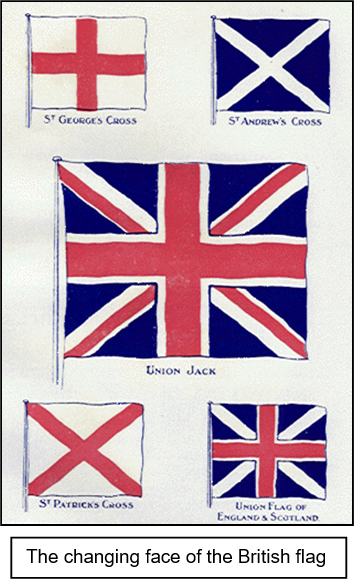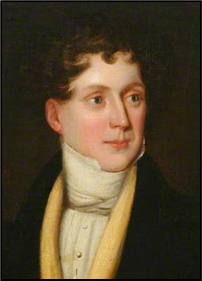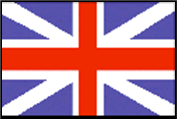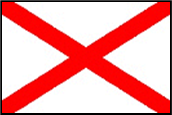


THE ACT OF UNION UNITES GREAT BRITAIN AND IRELAND 1801 (G3b)
xxxxxThe rebellion of 1798 convinced the British
government that the solution to the Irish problem was to amalgamate
the British and Irish Parliaments, thereby putting an end to
Ireland’s separate institutions. By a combination of bribery and
corruption, the Irish parliament was coerced into voting itself out
of existence, and the Act of Union came into force in January 1801. Once established,
however, George III intervened, and refused to give his consent to
Roman Catholic emancipation, an essential ingredient of the
settlement. Another rising occurred in 1803, but it was not until 1829 (G4), that a movement led
by Daniel O’Connell eventually
gained equal rights for the Roman Catholics. Political unrest and
economic slump continued, however, -
Including:
The Union Jack

 xxxxxThe Irish
rebellion of 1798,
though failing in its bid for independence, convinced the British
government, led by William Pitt, that a change of policy was needed
towards Ireland. The solution was seen as an amalgamation of the
Irish and British parliaments, thus merging the two kingdoms into
the United Kingdom, and putting an end to
Ireland’s separate political institutions and, hopefully, the
troubles that went with them.
xxxxxThe Irish
rebellion of 1798,
though failing in its bid for independence, convinced the British
government, led by William Pitt, that a change of policy was needed
towards Ireland. The solution was seen as an amalgamation of the
Irish and British parliaments, thus merging the two kingdoms into
the United Kingdom, and putting an end to
Ireland’s separate political institutions and, hopefully, the
troubles that went with them.
xxxxxSuch a dramatic measure was
at once opposed by the Irish parliament but, on the premise (as the
politician Robert Walpole once
said) that “every man has his price”, the British government
persevered. The first bill of union having been rejected early in
1800, it embarked on a broad programme of barely-
xxxxxThe Act of Union of
Britain and Ireland came into effect on the first day of January 1801. By its terms Ireland was to return 100
members to the House of Commons at Westminster, and 32 peers and 4
bishops were to be elected as life-
 xxxxxAtxground level the union was
far from popular in Ireland. Indeed, it had hardly been established
when, in July 1803, an uprising against English rule broke out, led
by the Irish patriot Robert Emmet (1778-
xxxxxAtxground level the union was
far from popular in Ireland. Indeed, it had hardly been established
when, in July 1803, an uprising against English rule broke out, led
by the Irish patriot Robert Emmet (1778-
xxxxxAs we shall see, the struggle for religious freedom and full independence (not sought by all) was to be a long one. Catholic Emancipation, led by the dynamic Daniel O’Connell, was not granted until 1829 (G4), and it was not until 1921 that the union was partially disbanded and the Irish Free State was established. Between these two dates, the economy slumped further, and virtually collapsed with the Great Potato Famine of 1845 (Va), and the mass emigration that followed.
Acknowledgement
Emmet:
attributed to the British artist James Petrie (c1745-
G3b-
xxxxxFollowing the union with Ireland in 1801 the Union Jack became the nation’s new flag. This was made up of the red cross of St. George of England, the white cross on a blue background of St. Andrew of Scotland, and the diagonal red cross of St. Patrick of Ireland.

 xxxxxFollowingxthe union with
Ireland in 1801, the term United Kingdom became official, and the
Union Jack became the nation’s new flag. The earliest form of the
flag to represent Great Britain, the “Union Flag or “Great Union”
(illustrated on the left), was devised in 1606 soon after James V1 of Scotland
came to the English throne as James I and united the two nations. It
superimposed the red cross of St. George of England upon the white
cross and blue background of the flag of St. Andrew of Scotland.
Because in heraldry red on blue is frowned upon, the red cross of
England was given a white border, in keeping with its own background
colour.
xxxxxFollowingxthe union with
Ireland in 1801, the term United Kingdom became official, and the
Union Jack became the nation’s new flag. The earliest form of the
flag to represent Great Britain, the “Union Flag or “Great Union”
(illustrated on the left), was devised in 1606 soon after James V1 of Scotland
came to the English throne as James I and united the two nations. It
superimposed the red cross of St. George of England upon the white
cross and blue background of the flag of St. Andrew of Scotland.
Because in heraldry red on blue is frowned upon, the red cross of
England was given a white border, in keeping with its own background
colour.
 xxxxxDuring the Commonwealth period (1649-
xxxxxDuring the Commonwealth period (1649-


